In my last two articles, I discussed the bones and joints. Now I would like to go over some of the common diseases that plague the skeletal system. It is important to be aware of some of these conditions for two reasons: it is likely you will be affected one day or already are.
Arthritis
Arthritis is one of the most common conditions in the world. Chances are, you know someone that is impacted by it. Arthritis literally means joint inflammation. There are two major types, osteoarthritis and rheumatoid arthritis.
Osteoarthritis
Osteoarthritis most commonly affects the hips and knees, but can impact other joints such as the fingers. This condition occurs when the cartilage in the joint begins to break down. The degradation of the cartilage leads to inflammation of the joint and alters the shape of the surrounding bone. The bone thickens and osteophytes, or spurs, may form.
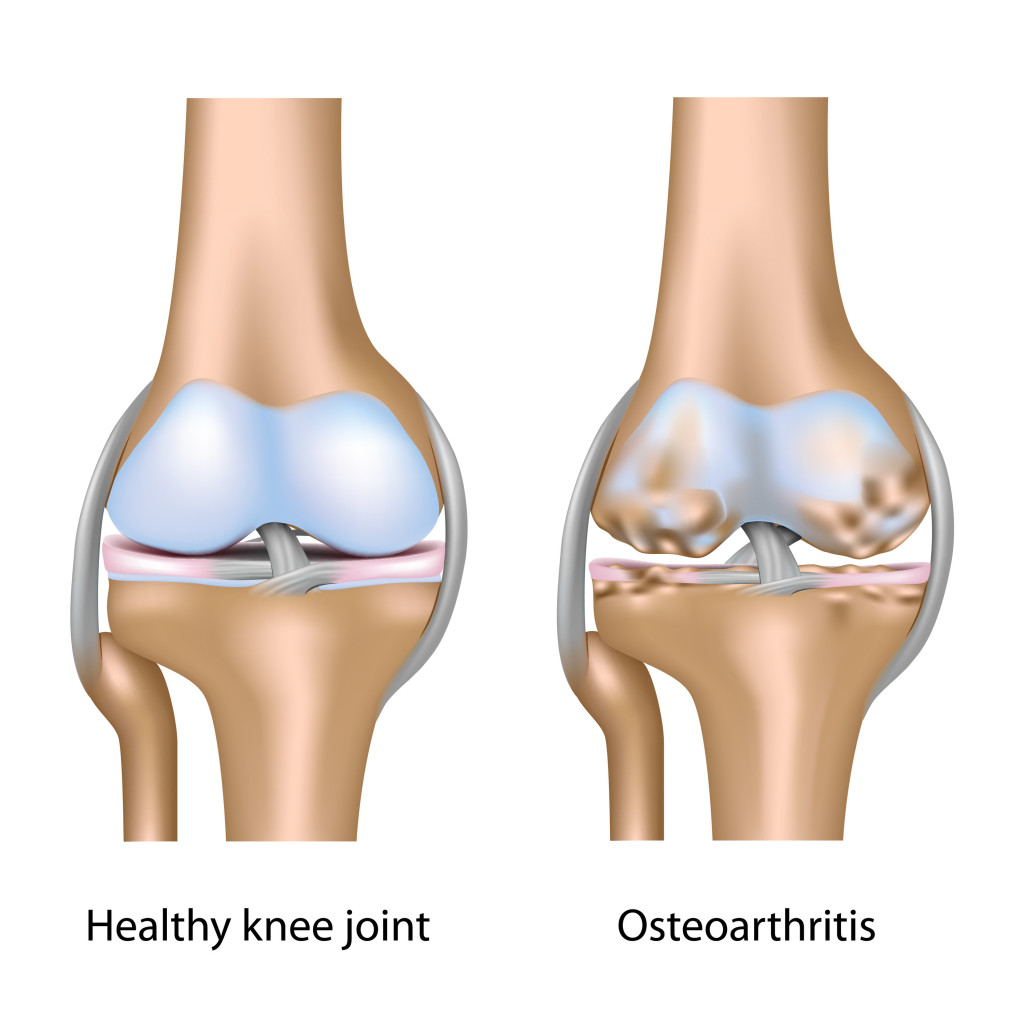
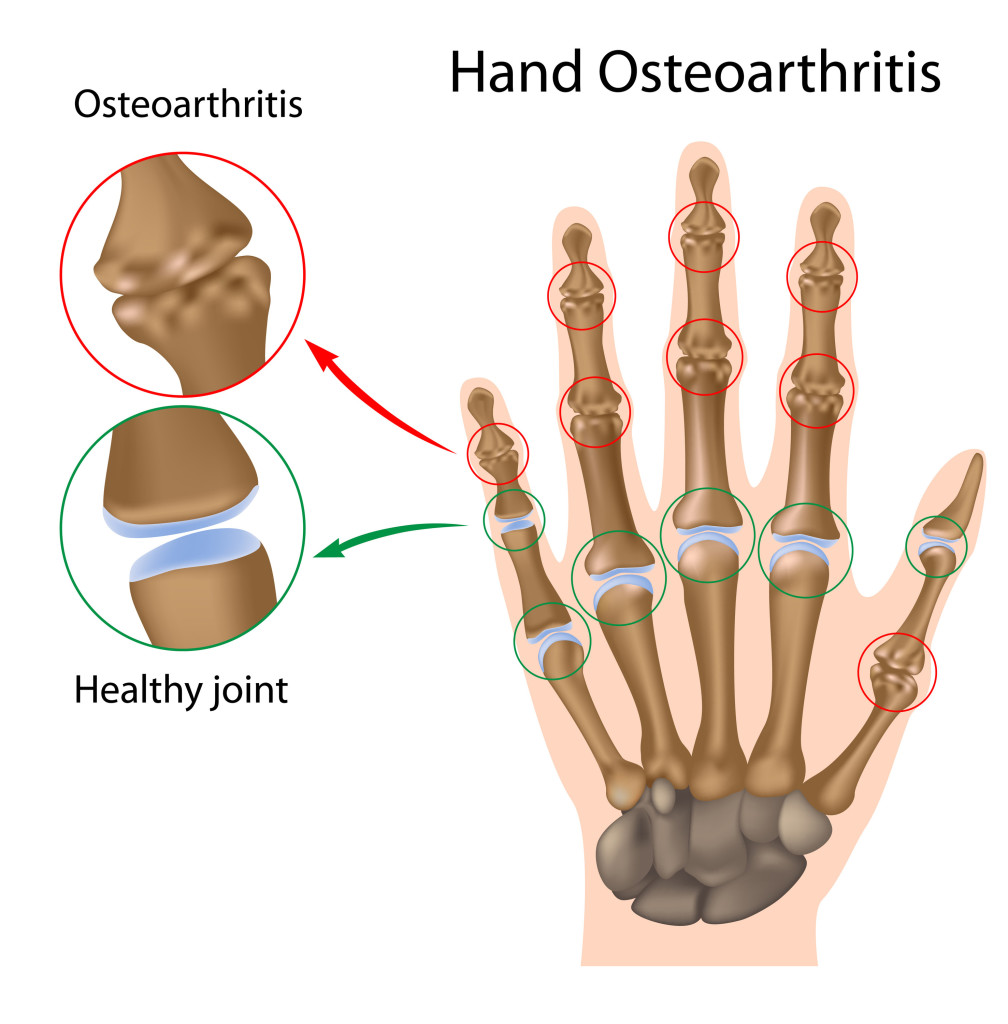
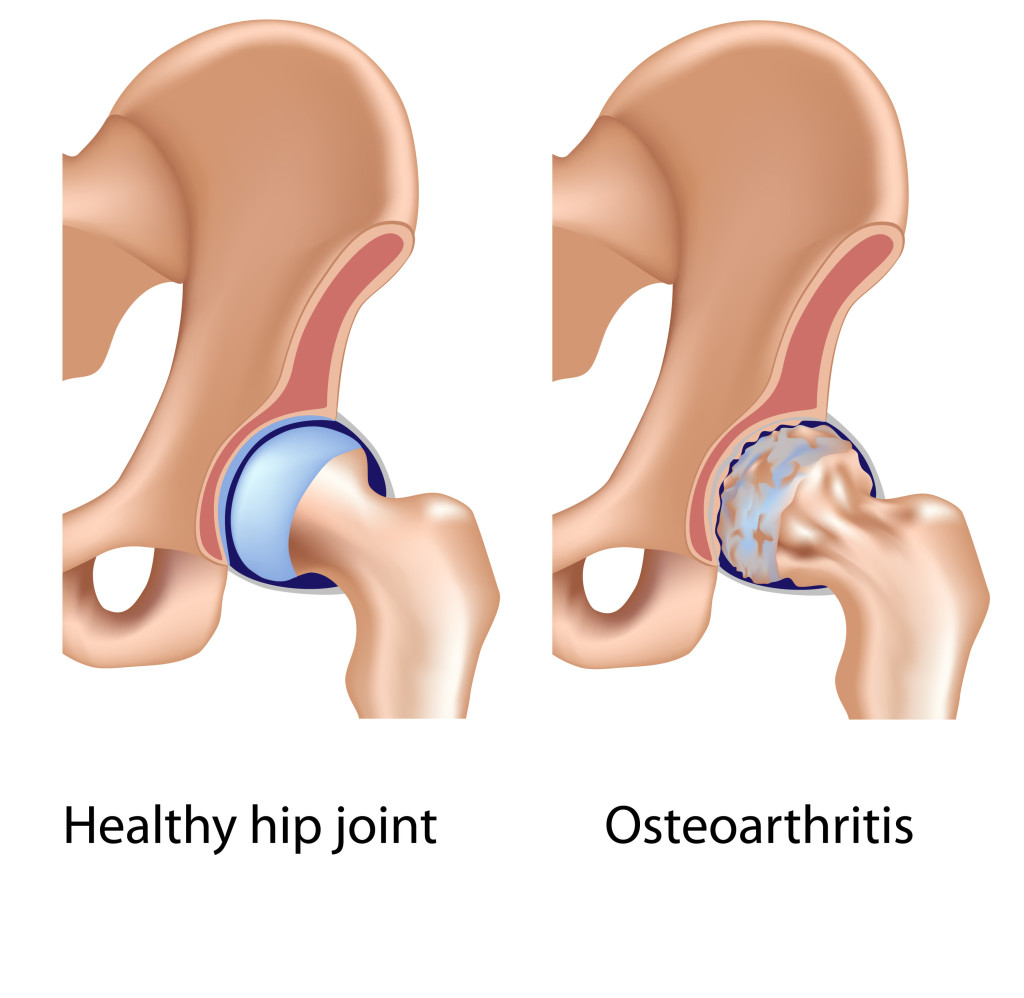
Spurs protrude from the joint and cause additional problems with movement. Bones begin to rub together, which leads to pain, discomfort, swelling and a change in movement.
Heberden’s nodes and Bouchard’s nodes are two of the most common manifestations of the disease. These nodes are bony enlargements located in the fingers. Heberden’s nodes are found in the distal (farther away from the body) joints, while Bouchard’s nodes are found in the proximal (close to the body) joints.
Osteoarthritis is most often a result of age and daily wear and tear. However, there are many other possible causes. Excess weight bearing down on the joints can also cause wear and tear on the joints. Inflammatory diseases such as Lyme disease, other forms of arthritis and diabetes can lead to osteoarthritis.
Osteoarthritis is a chronic condition, meaning that their symptoms are long term. The prognosis is not deadly, but it does cause a great deal of pain.
Rheumatoid Arthritis
The next most common form is Rheumatoid Arthritis. Like osteoarthritis, it is a chronic, inflammatory disease. It is considered chronic because the symptoms are long term.
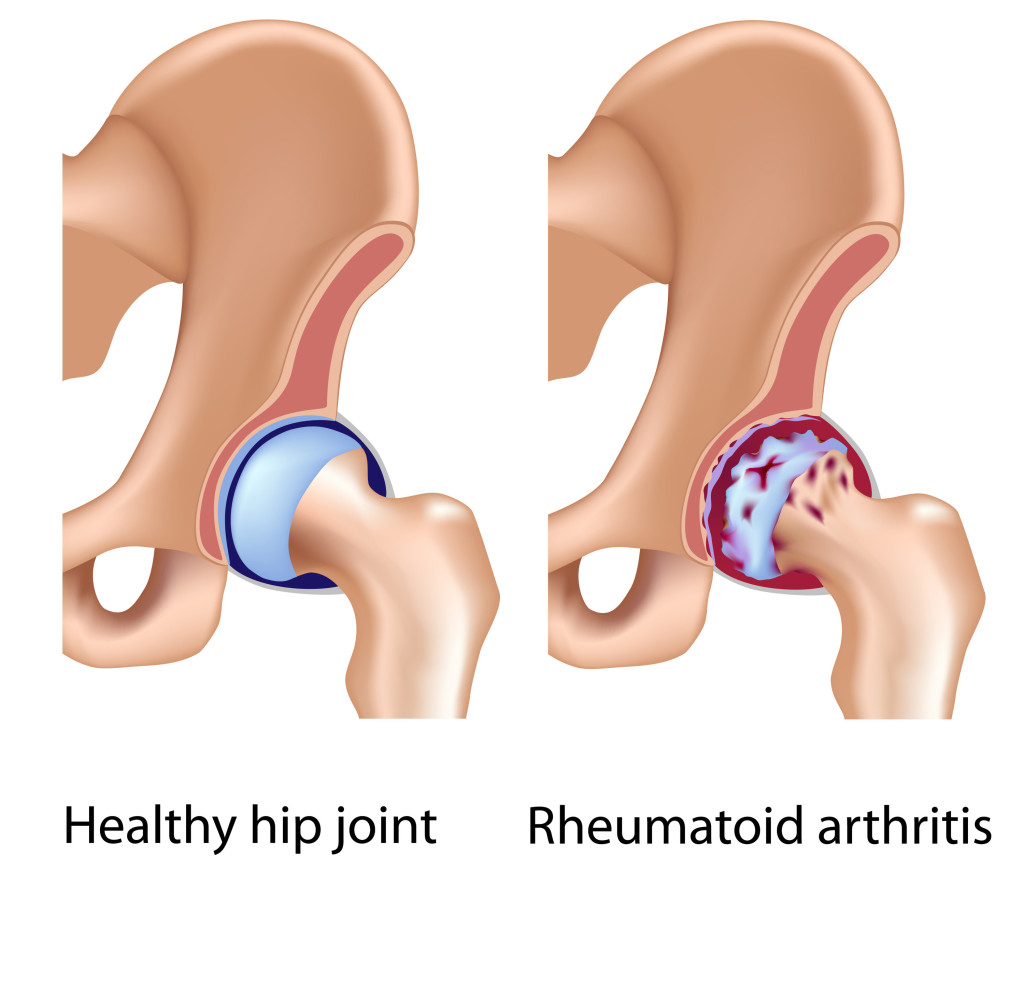
Unlike osteoarthritis, it is classified as an autoimmune disease and the exact cause is unknown.
The immune system will attack the tissue that surrounds the joint in addition to connective tissue in other areas of the body. The lining of the joint, called the synovium, becomes inflamed. Once this happens, the synovium will destroy the cartilage in the joint. This alters the shape of the bone and can lead to bone erosion.
Other symptoms can include joint warmness, fatigue and fever. Heberden’s and Bouchard’s nodes can also be present.
An individual with Rheumatoid Arthritis can have periods of remission between flare ups. There are a few risk factors. They are:
1. Gender. Females are more likely to develop rheumatoid arthritis.
2. Age. It can occur at any age, but is most likely to develop during middle age and late adulthood.
3. Genetics. If any family members have rheumatoid arthritis, your risk increases.
4. Previous joint injury
Rheumatoid arthritis can take years off your life, but the exact number varies among individuals. The long-term effects can greatly alter the quality of life by causing extreme pain, deformities and even heart problems.
Osteoporosis
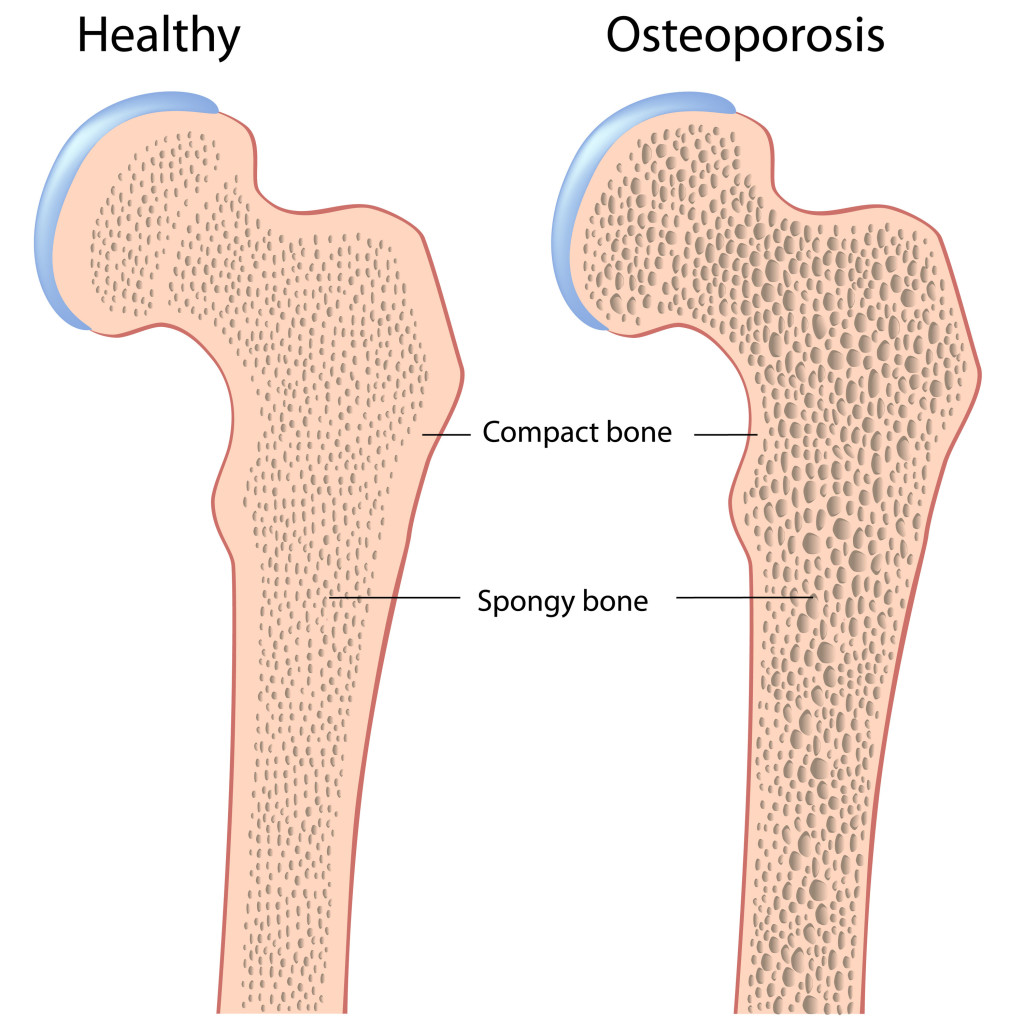 Osteoporosis is the most common bone disease. It is commonly associated as only affecting women, but it can also occur in men. This condition is caused by a reduction in bone density, which leads to more fragile bones and a higher risk of fractures.
Osteoporosis is the most common bone disease. It is commonly associated as only affecting women, but it can also occur in men. This condition is caused by a reduction in bone density, which leads to more fragile bones and a higher risk of fractures.
The cycle of bone building and reabsorption slows down around middle adulthood. The old bone is reabsorbed by the body and not enough new bone is formed to replace it. There are three types of osteoporosis: post-menopausal, senile and idiopathic.
Post-menopausal is the type we are most familiar with. This form of osteoporosis is caused by a lack of estrogen, which aids in bone formation.
The second type is called senile osteoporosis in which the onset is age-related and caused by a deficiency in calcium and/or vitamin D.
The final form is idiopathic osteoporosis, and the cause is unknown. Idiopathic osteoporosis can occur in juveniles and men, despite having sufficient levels of hormones, calcium and vitamin D.
There are quite a few risk factors for osteoporosis. They include:
1. Gender: being female makes one much more likely to develop osteoporosis.
2. Family history.
3. Hormone levels. Having reduced hormone levels or a condition like hyperthyroidism elevates your risk for developing osteoporosis.
4. Deficiencies in calcium and vitamin D.
5. Smoking
6. Inactive lifestyle
7. Having osteopenia, which means having low bone density
Fractures and falls are the primary concern with osteoporosis. Medications exist to prevent fractures that are called bisphosphonates. Taking vitamin D and calcium will also be beneficial in preventing calcium and bone loss. Lifestyle changes will also be necessary to avoid falls. This may include using a walker, wheel chair, living with family or getting outside help.
The prognosis for osteoporosis is not deadly, but it does have its challenges. Increase in the likelihood of fractures, especially of the hip, present the greatest obstacle.
Other than fractures, you are most likely to encounter to the above skeletal disorders. Each can alter the shape of your bones. It is important to know the risk factors and if you fall under any of them and make changes if necessary. Family history can also be a factor. Awareness may or may not prevent the onset, but at least you will be ready for it.

Dear Kristen,
Thank you so very much for these “learning” articles on joint and bone structure and complexities. I am a former U.S.A.F. Viet Nam Veteran with severe RA & SLE “Lupis” since being exposed to “AO” agent orange while on tour in Viet Nam for 2.5+ years duty in the 70s.
Sincerely,
Steven
thank u so much,i ve learnt a lot from this article. really, i am medicaly incline but i like 2 read about medical issues. pls if u can help me by reaching thru my email,i wil apreciate it. thanks. from SIERRA LEONE
Hello from Turkey. Thank you so much for the articles. Looking forward to your future work.
Thank you for this concise and informative summary
Thank you very much for sharing such a beautiful article on arthritis. The pictures in this article makes it easy for us to understand the disorders. Will appreciate it very much if you could kindly explain what ” bone erosion ” mean. Thank you.
Halimah
@C. Steven Goodie Were you ever able to do a causitive link to AO to get VA benefits?